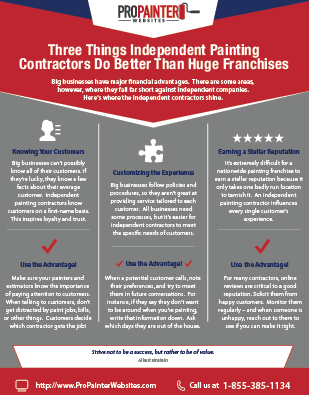Seasonal Considerations For Business Exterior Paint: What You Required To Know
Seasonal Considerations For Business Exterior Paint: What You Required To Know
Blog Article
Developed By-Ford Skafte
When you're planning an industrial outside paint project, seasonal aspects can make or damage your outcomes. You'll want to consider just how temperature level and moisture influence paint application and drying times. Choosing the ideal period can guarantee your paint adheres appropriately and lasts much longer. However which periods are really the very best for this sort of job? Let' how long is paint in a can good for out the key elements that can impact your task's success.
The Influence of Temperature Level on Paint Application
When you're preparing an industrial exterior paint task, the temperature level can significantly influence just how well the paint adheres and dries out.
Preferably, you wish to repaint when temperatures range between 50 ° F and 85 ° F. If it's too cold, the paint may not treat properly, leading to issues like peeling off or breaking.
On the flip side, if it's too warm, the paint can dry out too rapidly, stopping correct adhesion and causing an irregular surface.
You need to likewise take into consideration the time of day; early morning or late afternoon supplies cooler temperatures, which can be more desirable.
Always examine the manufacturer's referrals for the certain paint you're using, as they frequently supply advice on the excellent temperature range for optimum results.
Humidity and Its Result on Drying Times
Temperature level isn't the only environmental factor that influences your industrial external paint project; humidity plays a considerable function as well. High humidity degrees can reduce drying times significantly, influencing the general quality of your paint job.
When the air is filled with wetness, the paint takes longer to heal, which can lead to concerns like poor attachment and a higher threat of mildew growth. If you're painting on an especially damp day, be gotten ready for prolonged delay times in between layers.
It's crucial to check regional weather and strategy as necessary. Preferably, aim for moisture degrees between 40% and 70% for optimal drying out.
Maintaining these factors in mind guarantees your job remains on track and provides a long lasting finish.
Best Seasons for Commercial Exterior Painting Projects
What's the best time of year for your industrial external painting jobs?
Springtime and early autumn are typically your best options. During these periods, temperatures are moderate, and humidity levels are typically lower, developing perfect conditions for paint application and drying.
Avoid summertime's intense heat, which can trigger paint to dry as well swiftly, resulting in inadequate bond and finish. Similarly, winter months's cool temperatures can prevent correct drying and treating, risking the durability of your paint job.
Aim for days with temperatures in between 50 ° F and 85 ° F for optimum outcomes. Keep in mind to examine the neighborhood weather report for rain, as wet conditions can ruin your job.
Preparation around these elements ensures your paint task runs efficiently and lasts much longer.
Final thought
In conclusion, intending your commercial exterior paint projects around seasonal factors to consider can make a significant distinction in the result. By organizing job throughout the ideal temperature levels and humidity degrees, you'll guarantee much better bond and drying out times. Bear in mind to watch on regional weather report and select the right time of year-- springtime and very early fall are your best choices. Taking these actions will aid you attain a sturdy and expert coating that lasts.
